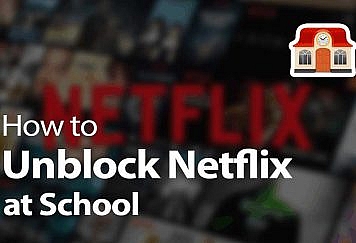The entertainment industry has seen a massive transformation over the past decade. From movies to music, digitalization has had an immense impact on how we consume and experience our favorite forms of entertainment.
Digital streaming platforms have replaced physical media, allowing us to access our favorite films and songs with a few clicks from almost anywhere in the world.
Social media outlets have also become major players in the industry, providing new ways for entertainers to reach their fans directly.
However, this shift towards digitalization hasn’t been without its challenges – piracy remains rampant, while traditional businesses struggle to stay afloat in the new landscape.
Let’s dive into how digitalization has changed entertainment forever and examine some of its implications for both consumers and creators alike.
Overview of Digitalization in Recent Years
Digitalization has changed the way people consume entertainment in recent years. It has allowed for instant access to a wide variety of content, such as movies, TV shows, music, and video games.
Digital platforms have also allowed for the creation of new entertainment experiences such as streaming services and virtual reality.
This “fourth industrial revolution” has increased the demand for digital entertainment and reshaped the industry as a whole.
The Impact of Technology on Film and Television
Technology has allowed us to create immersive experiences and new ways for audiences to connect with content.
Digital technology has enabled filmmakers to shoot, edit and distribute movies in ways that would have been impossible just a decade ago.
It has also allowed television producers to create highly-viewed shows with lower production costs than ever before.
In addition to the cost savings of digital filmmaking and TV production, digital technologies are impacting the way we watch film and television.
On-demand streaming services like Netflix, Hulu, and Amazon Prime have made it easier to access content when and where people want to watch it.
This type of convenience has changed the way audiences consume media and is leading to more binge-watching habits.
Moreover, digital technology is making it easier for independent filmmakers to create and share their work.
Platforms like YouTube, Vimeo, and Kickstarter have opened up the creative process to people from all walks of life and allowed filmmakers to break into the industry without needing major studio funding or distribution deals.
Finally, digital technology is making it easier for viewers to connect with filmmakers through social media platforms such as Twitter, Facebook, and Instagram.
This has enabled fans to engage with filmmakers directly and allowed them to provide feedback on projects. It has also opened up opportunities for crowdfunding campaigns, enabling independent filmmakers to get their projects funded by the people who care about them the most.
The Benefits and Challenges of Streaming Services
By providing direct access to content, these services have made it easier than ever for people to watch their favorite movies and shows anytime, anywhere.
However, this newfound convenience has come with some challenges as well.
Here are some of the pros and cons of streaming services:
Benefits
- Cost Savings: Streaming services are typically considerably cheaper than traditional cable or satellite packages, making them an attractive option for budget-conscious users.
- Convenience: With streaming services, you can watch whatever you want, whenever and wherever you want, without having to commit to a long-term contract or worry about missed episodes.
- Variety: Streaming services offer a wide variety of content, from TV shows and movies to live sports broadcasts and more.
Challenges
- Limited Accessibility: Streaming services are only accessible via the internet, so users must have access to reliable public or private wifi in order to use them.
- Technical Issues: Streaming services can be prone to buffering and other technical issues that can disrupt the viewing experience.
Video Games: A Growing Industry
With the rise of gaming consoles, handheld devices, and powerful computers, developers have been able to create stunningly realistic and immersive games that players can experience in their homes.
Digitalization has also enabled gamers to connect with other gamers around the world through online multiplayer capabilities, allowing them to play in teams and compete against each other.
This has led to an explosion of competitive gaming tournaments, which have become increasingly popular amongst gamers of all ages.
Virtual Reality in Entertainment
Virtual reality has allowed for a completely new immersive experience to be enjoyed by viewers all over the world, and it can significantly enhance the entertainment industry.
Virtual Reality allows viewers to enter an environment that may have previously only been experienced through video game consoles or movies.
This has enabled creators to bring a more realistic experience that can often put the viewer directly in control of the action.
For example, virtual reality can be used to create interactive experiences such as theme parks, sports programs, and even educational systems.
The ability to interact with these environments allows users to explore them in ways they may not have been able to before.
Movies and TV shows can also be enhanced by virtual reality, allowing users to feel like they are in the scene as opposed to just watching it.
The possibilities of VR go far beyond entertainment for movies or video games.
Businesses are now using virtual reality for training, marketing, product development, and even data visualizations.
This technology gives businesses access to larger, more detailed models and simulations which can be used to evaluate and test ideas quickly.
Artificial Intelligence (AI) in the Media Landscape
The advent of AI has changed the media landscape significantly, with AI-driven technology unlocking new possibilities for entertainment.
AI can be used to automate tedious tasks in video editing, audio mixing, and other post-production processes, freeing up time and resources for creative development.
By utilizing data analysis and machine learning algorithms, AI can also help identify consumer trends, allowing media creators to create content that is tailored to their audiences.
AI also enables the development of personalized experiences as well as new possibilities for interactive and immersive entertainment.
Social Media’s Influence on the Entertainment Industry
Social media has allowed millions of people around the globe to share their opinions and experiences on popular topics, including music, movies, TV shows, and more.
From sharing reviews and recommendations to engaging with celebrities or influencers online, users are able to interact directly with one another.
This has provided entertainment companies with an unprecedented platform to reach out and advertise their products.
As a result, many businesses have invested heavily in social media marketing strategies and campaigns as a way to promote their services and content.
Trends to Watch Out For
Digitalization has had a profound impact on the entertainment industry, ushering in an era of ever-evolving technology and innovative opportunities for businesses to reach audiences.
With so much change occurring in such a short period of time, it’s important to stay up to date with the latest trends and developments.
Here are some of the most important digital trends to watch out for in the near future:
Increased Use of Digital Platforms
As digital technology continues to evolve, more entertainment experiences are being shifted onto digital platforms.
This is creating opportunities for new and creative experiences, as well as increasing accessibility for consumers around the world.
Enhanced Immersion in Content
Technology such as virtual reality (VR) and augmented reality (AR) are allowing people to become more immersed in their entertainment experiences.
These technologies can help create a more interactive and engaging experience for viewers, providing them with an increased sense of presence.
Rise of Streaming Services
Streaming services such as Netflix, Amazon Prime Video, Hulu, and others are becoming increasingly popular ways to access the content.
This trend has changed the way media is consumed, allowing viewers to watch content on their own schedule and access a vast library of programming at any time.
The Emergence of Interactive Content
Technology such as artificial intelligence (AI) and machine learning are being used to create interactive experiences such as virtual assistants, voice-controlled navigation, personalized content recommendations, and more.
These technologies are allowing people to interact with their entertainment in new and exciting ways.
More Content Tailored to Consumers
With the emergence of digital technology, content creators can now tailor their work to better fit the needs and interests of their audience.
By leveraging data analytics, they can create content that is more in line with consumer preferences, making it easier to find content that resonates.
Final Word
Digital technology has allowed us to access content more quickly and conveniently than ever before. It also allows for greater personalization of our media consumption experience.
As digital technologies continue to evolve in complexity and sophistication, we can expect further changes in how we consume and interact with entertainment across all platforms.
The possibilities are both exciting and limitless!
How have you seen the influence of digital transformation affect your own entertainment experiences?
Follow TechStrange for more Technology, Business, and Digital Marketing News.





